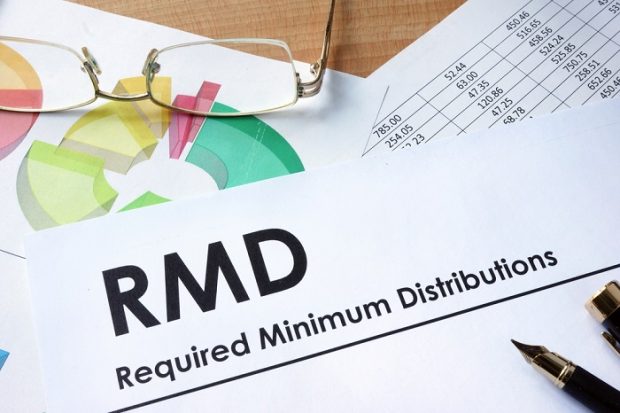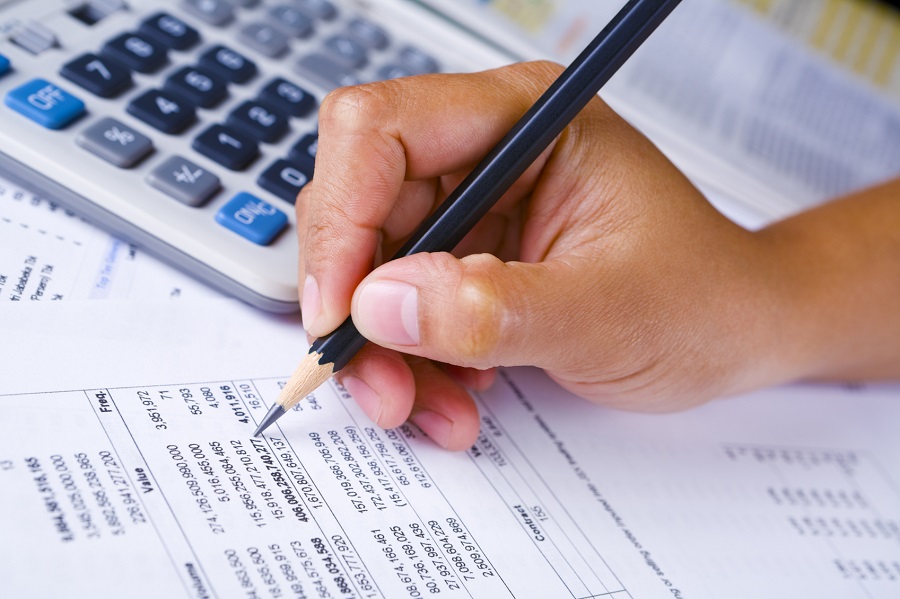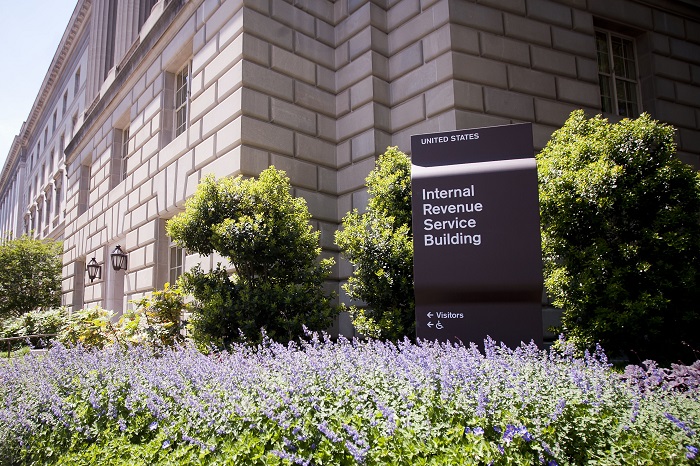 There are deadlines by which RMDs mustbe taken; otherwise, the account owner is subject to penalties inaddition to taxes—and the penalties are pretty stiff. So this isnot something you want to mess around with. (Photo:Shutterstock)
There are deadlines by which RMDs mustbe taken; otherwise, the account owner is subject to penalties inaddition to taxes—and the penalties are pretty stiff. So this isnot something you want to mess around with. (Photo:Shutterstock)
Required minimum distributions, or RMDs, are something thatretirees and those who plan to retire need tolearn about. Those who don't could be in for some prettyunpleasant—and expensive—surprises.
|Related: What Americans get wrong about retirementand what they fear about it
|So what exactly is an RMD? According to the IRS, it's the minimum amount of money you haveto withdraw from a retirement account every year. Usually, you haveto start taking RMDs from IRAs, SEP IRAs, SIMPLE IRAs or retirementplan accounts when you hit age 70½.
|There are deadlines by which RMDs must be taken; otherwise, theaccount owner is subject to penalties in addition to taxes—and thepenalties are pretty stiff. So this is not something you want tomess around with.
|Related: Boomers, it's time to spend — and paytaxes on — your 401(k)s
|Here are 10 things you need to know about required minimumdistributions:
|
10. Owners of Roth IRAs don't have to take RMDs.
In fact, Roth owners can leave the money in there fortheir heirs to enjoy, if they so desire.
|Related: Roth IRAs may work for older savers afterall
|Roth accounts are funded with after-tax dollars; therefore, whenthe time comes during retirement that you do need the money, you canwithdraw all contributions, and the earnings on thosecontributions, tax-free.
|Now, about those heirs: there are rules that govern theirwithdrawals from an inherited Roth, and they will be subject totaxes on the money. In fact, they will be subject toRMDs—but that's a separate matter.
||9. RMDs must begin before April 1 of the year after theretirement account owner turns 70½.
In other words, if you turn 70½ some time this year, you'll haveto begin taking money from your retirement account(s) before April1 of 2018—unless you haven't yet retired.
|If you are a 5 percent owner of the business sponsoring theretirement plan, though, RMDs must begin once you turn 70½, even ifyou haven't yet retired.
|Related: Retirement savers can't forget it's allabout retirement spending
|But say you're not a part owner of the business and you haveretired: You need to take that first RMD before next April 1.
|The RMD you take before April 1 of 2018 as mentioned above, bythe way, is for tax year 2017; come December 31 of 2018, you haveto take another RMD, this time for tax year 2018—becauseonce you've turned 70½, the deadline changes, and withdrawals mustbe made by December 31 of all subsequent years lest you get nailedfor a 50 percent penalty on the amount of the withdrawal.
||8. RMD rules apply to all employer-sponsored retirementplans.
That includes profit-sharing, 401(k), 403(b) and 457(b) plans.The rules also apply to traditional IRAs and IRA-based plans suchas SEPs, SARSEPs and SIMPLE IRAs.
|Related: Top 7 401(k) questions employees mayhave
|7. The IRS provides tables used to calculate the amount of theRMD for each account.
Yes, that's right—you have to calculate the RMD for eachretirement account you have.
|The tables provided by the IRS are for life expectancies: theJointand Last Survivor Table is used if the sole beneficiary of theaccount is your spouse and your spouse is more than 10 yearsyounger than you, while the UniformLifetime Table is used if your spouse is not your solebeneficiary or your spouse is not more than 10 years younger andthe Single LifeExpectancy Table is used if you are a beneficiary of an account(an inherited IRA).
|Related: 9 ways to save on taxes inretirement
|
6. You have to calculate RMDs separately, but you can take allthe money from a single account.
At least, you can if we're talking IRAs and 403(b)s here.
|While you have to go through the aggravation of separatecalculations for each account, you don't have to take as manywithdrawals as you have accounts; instead, you can opt to take themoney from one or more accounts.
|Related: Are we facing a future of subdued homedemand even as retirees want to sell?
|But—and this is important—RMDs required from other types ofretirement plans, such as 401(k) and 457(b) plans, do have to betaken separately from each of those plan accounts. Go figure.
|5. You're the one left holding the bag if the calculation isn'tdone right.
Yes, even though your IRA custodian or retirement planadministrator may calculate the RMD—in fact, the IRS says that anIRA trustee must either report the amount of the RMD to the IRAowner or offer to calculate it for the owner—you, as the accountowner, are the one who's ultimately responsible for calculating theamount of the RMD.
|So make sure you check their work.
||4. Remember, it's required minimum distribution.
That means you can take more than that if you want, or need, to.But you can't take less.
|Oh, and you can't apply the extra to next year's RMD—that startsthe clock (well, the calculator) ticking again.
|Related: Many retirees spend retirement lump-sumpayments too quickly
|3. And the penalty gets really expensive if you failto take the required minimum on schedule.
It bears repeating that if you fail to take an RMD on time,you'll be hit with a penalty of 50 percent on the amount thatshould have been withdrawn.
|That means that if you were supposed to take $10,000 by December31 and didn't, you'll get penalized $5,000 for the omission. (Ifyou only took $5,000, you'll get stuck for a $2,500 penalty on the$5,000 you didn't withdraw.)
|That's money you could have spent on your retirement, so makesure you take it, even if you don't spend it. In fact, you couldput it into savings or reinvest it, if your budget is thatcomfortable—but don't just watch it go up in smoke.
||2. There are ways to get the penalty waived.
But seriously, do you want to go through all that?
|Still, if you can convince the IRS that your failure to withdrawthe full and correct amount “was due to reasonable error and thatreasonable steps are being taken to remedy the shortfall,” youmight be able to avoid the penalty.
|To qualify, though, you have to file Form5329 and attach a letter of explanation. Make it good.
|1. RMDs are taxed at your regular tax rate.
So, depending on your tax bracket, that's the percentage you'llbe paying not just on any regular income but also on your RMDs.
|And before you ask, no, you can't take that money and roll itover into another tax-deferred account. One way or another, youhave to pay the taxes on it.
|Complete your profile to continue reading and get FREE access to BenefitsPRO, part of your ALM digital membership.
Your access to unlimited BenefitsPRO content isn’t changing.
Once you are an ALM digital member, you’ll receive:
- Critical BenefitsPRO information including cutting edge post-reform success strategies, access to educational webcasts and videos, resources from industry leaders, and informative Newsletters.
- Exclusive discounts on ALM, BenefitsPRO magazine and BenefitsPRO.com events
- Access to other award-winning ALM websites including ThinkAdvisor.com and Law.com
Already have an account? Sign In
© 2024 ALM Global, LLC, All Rights Reserved. Request academic re-use from www.copyright.com. All other uses, submit a request to [email protected]. For more information visit Asset & Logo Licensing.












